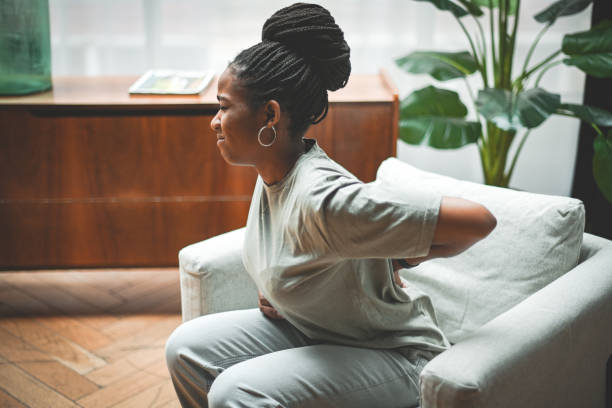
How Everyday Activities Strain Your Back and Tips to Prevent Pain.

Back pain is one of the most common ailments affecting people worldwide, often caused by everyday activities that we don’t realize are damaging our spine. These activities, while seemingly harmless, can contribute to long-term spinal issues if not addressed properly. Understanding and adjusting these habits can significantly reduce back strain and prevent chronic pain. Here are some common activities that may be straining your back and ways to mitigate their impact.
Sitting for Prolonged Periods
In our modern lifestyle, prolonged sitting is almost unavoidable. Whether at work, driving, or relaxing at home, we spend a significant portion of our day sitting. This can lead to poor posture, causing stress on the lumbar spine and contributing to back pain.
To deal with this:
– Use a chair with good lumbar support to maintain the natural curve of your spine.
– Take short breaks every 30 minutes to stand up, stretch, and walk around.
– Keep your feet flat on the ground, knees at a 90-degree angle, and shoulders relaxed.
Improper Lifting Techniques
Lifting heavy objects incorrectly can place immense stress on your spine, leading to acute injuries or chronic conditions.
To lift properly:
– Bend your knees and hips, not your waist, and keep the object close to your body.
– Turn your whole body rather than twisting your spine.
– If an item is too heavy or awkward to lift alone, don’t hesitate to ask for assistance.
Using Electronic Devices
Constant use of smartphones, tablets, and laptops can lead to ‘tech neck’—a condition caused by bending your neck forward for prolonged periods.
To avoid this:
– Raise your devices to eye level to reduce the strain on your neck.
– Follow the 20-20-20 rule: every 20 minutes, look at something 20 feet away for at least 20 seconds.
– Ensure your workstation promotes good posture, with your screen at eye level and your keyboard and mouse within comfortable reach.
Poor Sleeping Positions
Sleeping in positions that do not support the natural curvature of your spine can lead to back pain and stiffness.
For a healthier back:
– Sleep on your back with a pillow under your knees, or on your side with a pillow between your knees to keep your spine aligned.
– Choose a mattress that supports your spine’s natural curve. Avoid overly soft mattresses that don’t provide adequate support.
– Use a pillow that supports the natural curve of your neck.
Carrying Heavy Bags
Carrying heavy bags, especially on one shoulder, can create an imbalance and strain your spine.
To distribute weight evenly:
– Use a backpack with two straps to distribute weight evenly across your shoulders.
– If you must use a single-strap bag, alternate shoulders frequently to prevent overloading one side.
Household Chores
Common household chores like mopping and gardening often involve repetitive motions and awkward postures that can strain your back.
To reduce strain:
– Use tools with long handles to avoid bending over excessively.
– When mopping, keep your spine neutral and use your legs to move back and forth.
– Break up chores into manageable segments and take breaks to stretch and move around.
Driving
Long hours of driving can lead to poor posture and back pain due to prolonged sitting and limited movement.
To improve comfort while driving:
– Adjust your seat so your knees are slightly higher than your hips. Use lumbar support to maintain the natural curve of your spine.
– On long drives, take regular breaks to stretch and walk around.
– Sit with your back firmly against the seat and hold the steering wheel at a comfortable height to reduce strain on your shoulders and back.
By being mindful of these everyday activities and making small adjustments, you can significantly reduce the strain on your back and prevent long-term spinal issues.
Article By Suzy Nyongesa.
